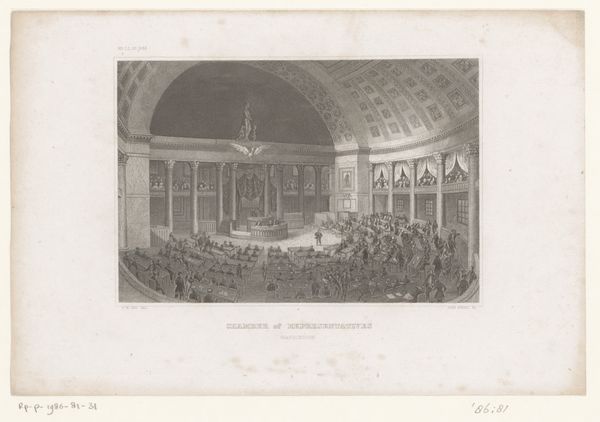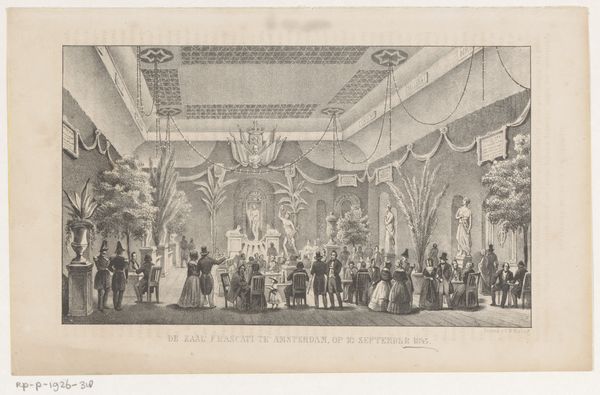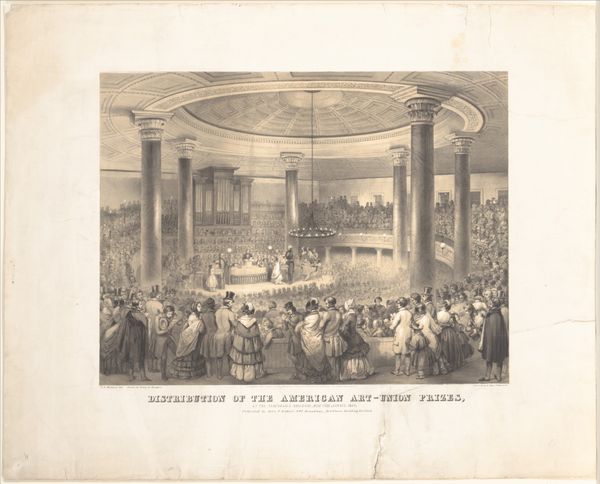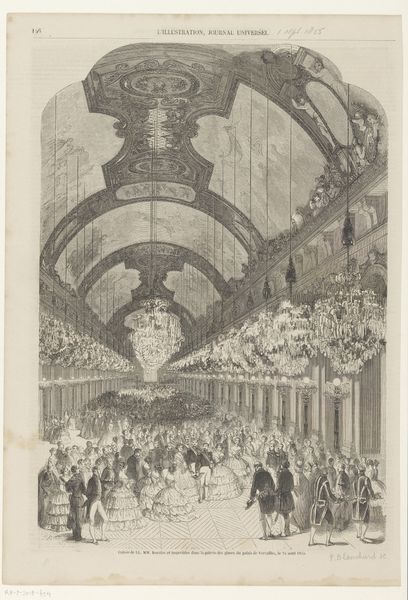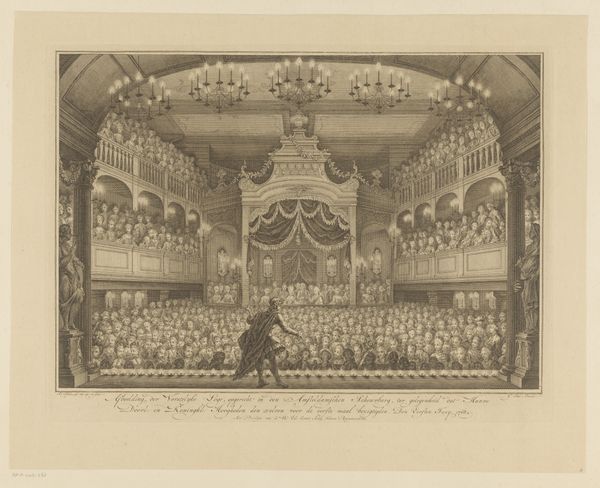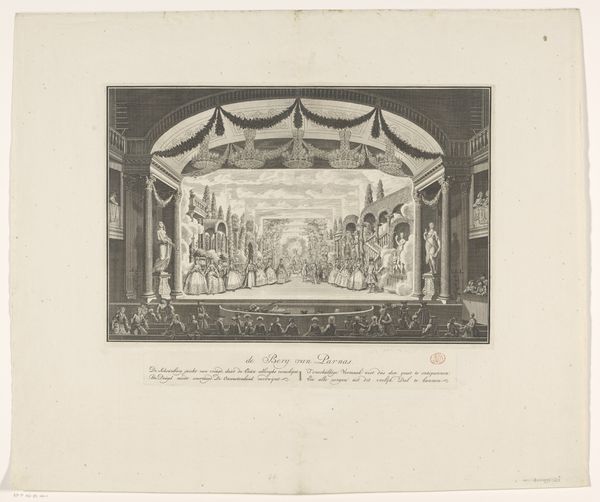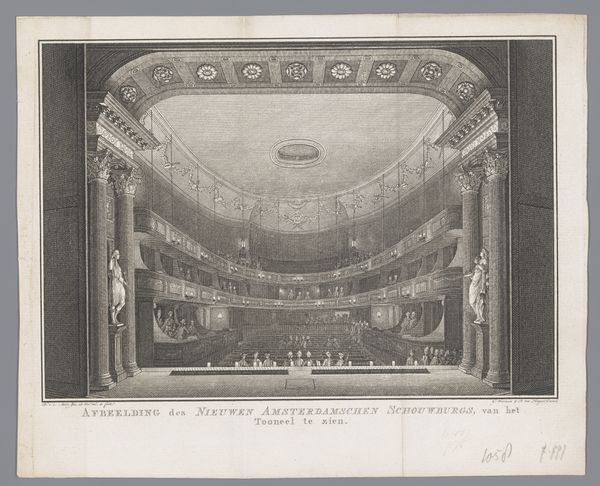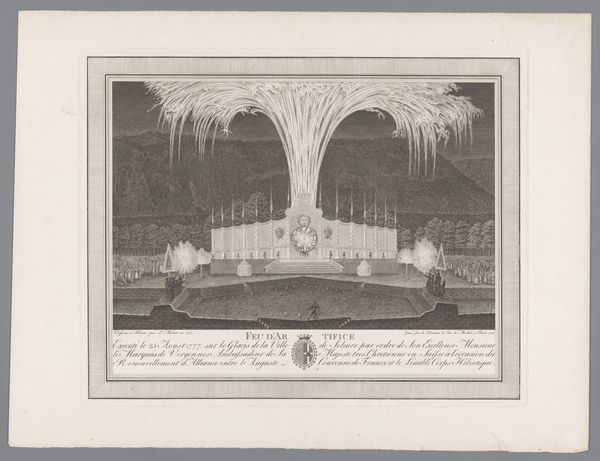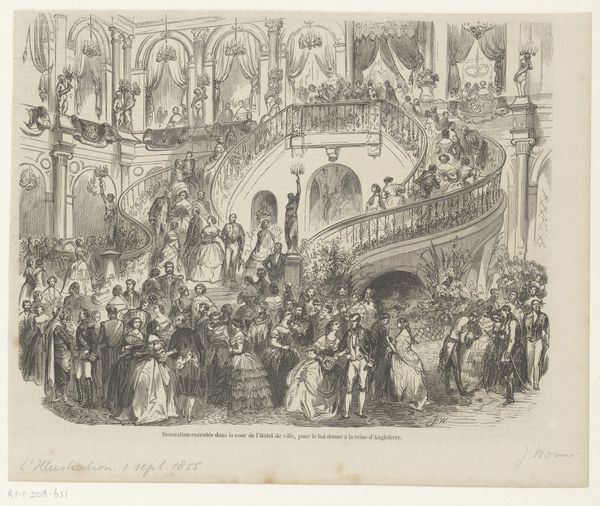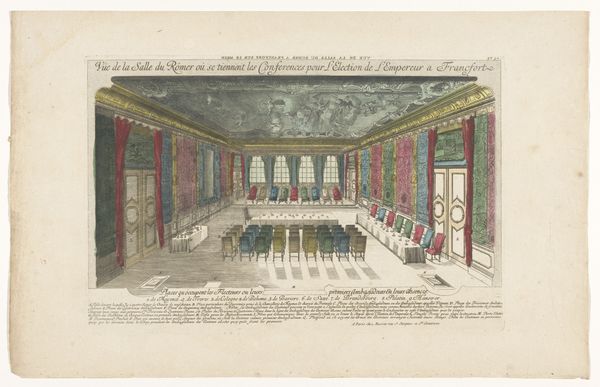
The Broadway Tabernacle, New York, in Anniversary Week 1851 - 1861
0:00
0:00
drawing, print, engraving, architecture
#
drawing
# print
#
history-painting
#
engraving
#
architecture
#
realism
Dimensions: plate: 5 1/2 x 7 5/16 in. (14 x 18.6 cm) sheet: 9 5/8 x 11 7/16 in. (24.5 x 29.1 cm)
Copyright: Public Domain
Editor: So, here we have "The Broadway Tabernacle, New York, in Anniversary Week," a drawing and print by Snyder, Black & Sturn, dating roughly from 1851 to 1861. The level of detail is quite remarkable, it gives such an expansive and grand sense of the interior space... What do you see in this piece? Curator: This engraving provides a window into the social and political landscape of mid-19th century New York. Tabernacles like this weren't just religious spaces; they were key sites for social movements, particularly abolitionism and women’s suffrage. The sheer size of the crowd suggests a space where collective identity was forged. How do you think the architecture of the Tabernacle itself – the circular layout, the prominent columns – contributes to this sense of collective identity? Editor: I suppose the circular layout would foster a sense of unity, perhaps everyone feeling they have equal access to the speaker. Though, from what I'm seeing, only white congregants are attending, what do you make of that? Curator: Precisely. The absence of Black people speaks volumes about the racial segregation deeply embedded within even progressive religious circles. While some abolitionists preached in these spaces, racial equality within the church itself was often lacking. The visual reinforces the notion of who belonged, who was centered, and, importantly, who was excluded from this vision of “community." It also begs us to ask, where are the poor? Who gets access to be seated here? Editor: That’s a sobering perspective. It highlights the complexities and contradictions of the era, because there’s also that tension with it being anniversary week, right? So they are celebrating, and who are they celebrating and what are they celebrating in this very elite circle? I never thought of art being useful in viewing those power structures. Curator: Absolutely, visual culture can reveal those underlying power structures. Examining such artwork helps us grapple with the past's unfinished business. It helps me understand modern problems through the scope of artworks like this one. Editor: Thank you. This makes me want to research who attended this event and also compare it to other churches' attendance during this time. Curator: Yes, and let’s keep pushing to unveil the untold stories.
Comments
No comments
Be the first to comment and join the conversation on the ultimate creative platform.
